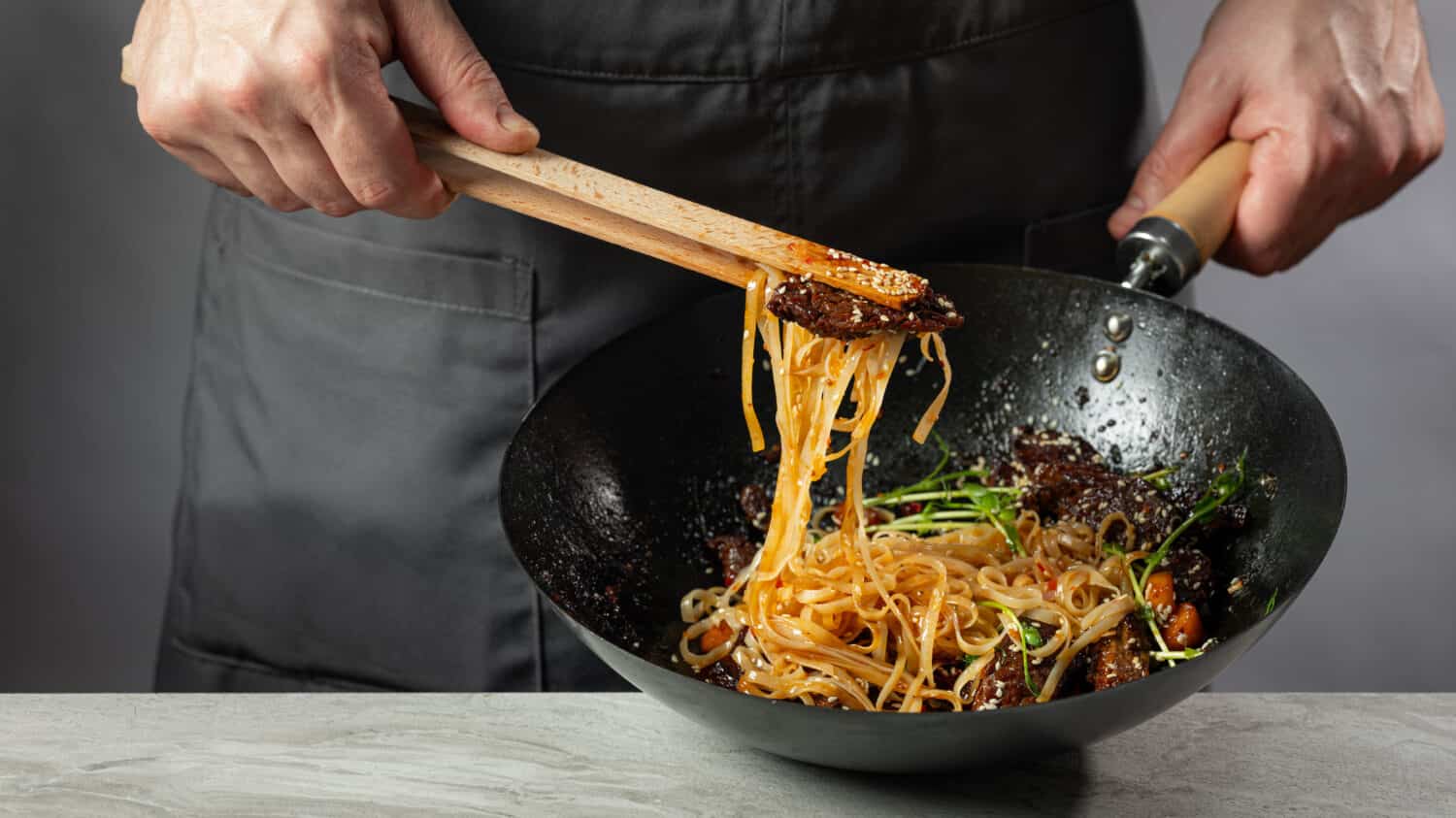Confused about the difference between pasta vs. rice noodles? You’ve come to the perfect place to learn about it. Pasta and rice noodles may look very similar but they are made from different flours. As a result, their flavor profiles and noodle textures can be quite unique, and pasta and rice noodles are used in different dishes. However, there is some overlap with wheat-based noodles in certain Asian dishes.
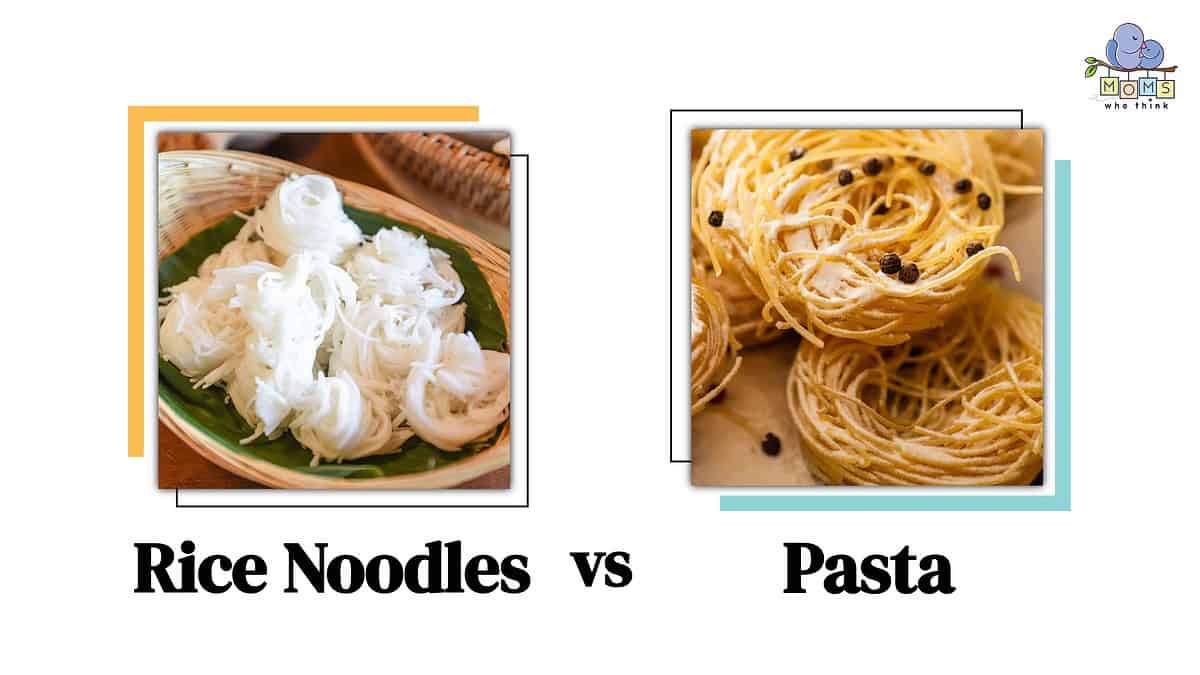
©
When it comes down to picking pasta vs. rice noodles as your base, understanding their differences is key. In this post, we’ll talk about the histories of each. You'll learn what makes pasta unique from its cousin, the rice noodle. By the end of this, you'll know how to identify them, the process of cooking them, and get some ideas for your next meal.
Pasta Rice vs. Noodles: How Are They Different?
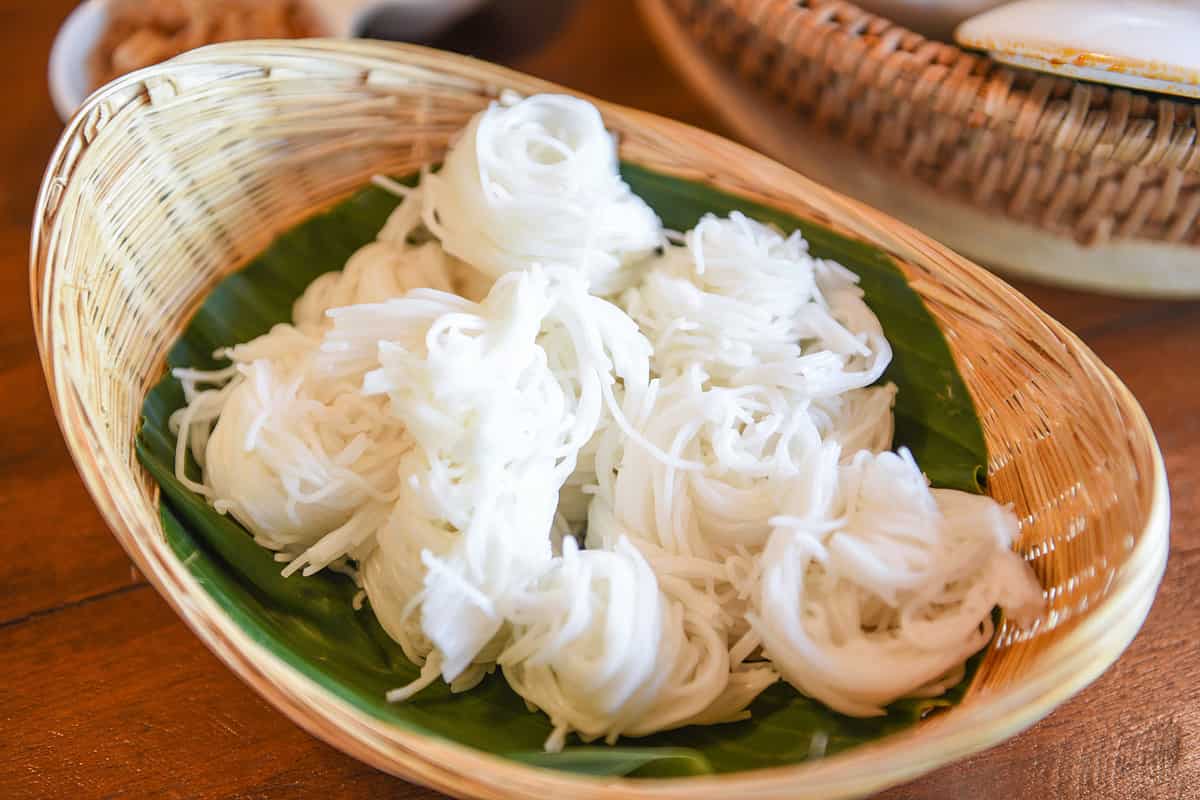
Thai rice vermicelli noodle on basket – Thai traditional menu
©iStock.com/panida wijitpanya
The main difference between pasta and rice noodles is their ingredients. Rice noodles are primarily made from rice flour and water while pasta is traditionally made from wheat flour and water. Due to these ingredient differences rice noodles have a more subtle flavor and chewier texture whereas pasta has a firmer texture. Pasta is popular in Italian cuisine whereas rice noodles are a staple of Asian cuisine.
Finally, it should be noted that rice noodles are generally gluten-free while wheat pasta is not gluten-free. This makes rice noodles popular for diners with gluten sensitivities or celiac disease. Let's dive into all these differences in more detail!
What Exactly Is Pasta?
Pasta is made by combining refined flour, typically wheat flour, and water to create a dough. Cut, shape, and mold this dough into the noodle of your choice, just like you've got pasta! It is popular for cooking because it is so easy to make and cheap to buy. Pasta is a great base for sauces, veggies, and proteins. It's a nice addition to soups and certain types of pasta are often used in casseroles and lasagnes.
History And Origin
While pasta is most commonly linked to Italy, there is some debate as to its true origins. A long-debunked theory credited Marco Polo with the introduction of pasta to Italy, claiming he brought the noodle over from China around the 13th century. When a pasta-making tool was found in an Etruscan tomb, people pointed the pasta trail toward this pre-Roman civilization. However, others are convinced that Arab traders first brought pasta on their trade routes, introducing it somewhere in the 8th or 9th century (via Trafalgar). Pasta would've been good for travel because it doesn't go bad once it is dried!
How To Cook Pasta
If you’re feeling confused about the difference between pasta vs. rice noodles, you’ve come to the perfect place to learn about it. Pasta and rice noodles may look very similar but they are made from different flours. As a result, their flavor profiles and noodle textures can be quite unique. Pasta and rice noodles are used in different dishes, although there is some overlap with wheat-based noodles in certain Asian dishes. Historically, pasta is often linked in Italy, however, there are some theories that pasta is a version of rice noodles, which have existed for thousands of years in all kinds of cultural cooking.
When it comes down to picking pasta vs. rice noodles as your base, it’s important to understand the way their differences will affect the dish you are making. In this post, we’ll talk about the histories of each, and learn what makes pasta unique from its cousin, the rice noodle. You’ll learn how to identify them, the process of cooking them and get some ideas for your next meal. Keep on reading to settle the debate of pasta vs. rice noodles, once and for all!
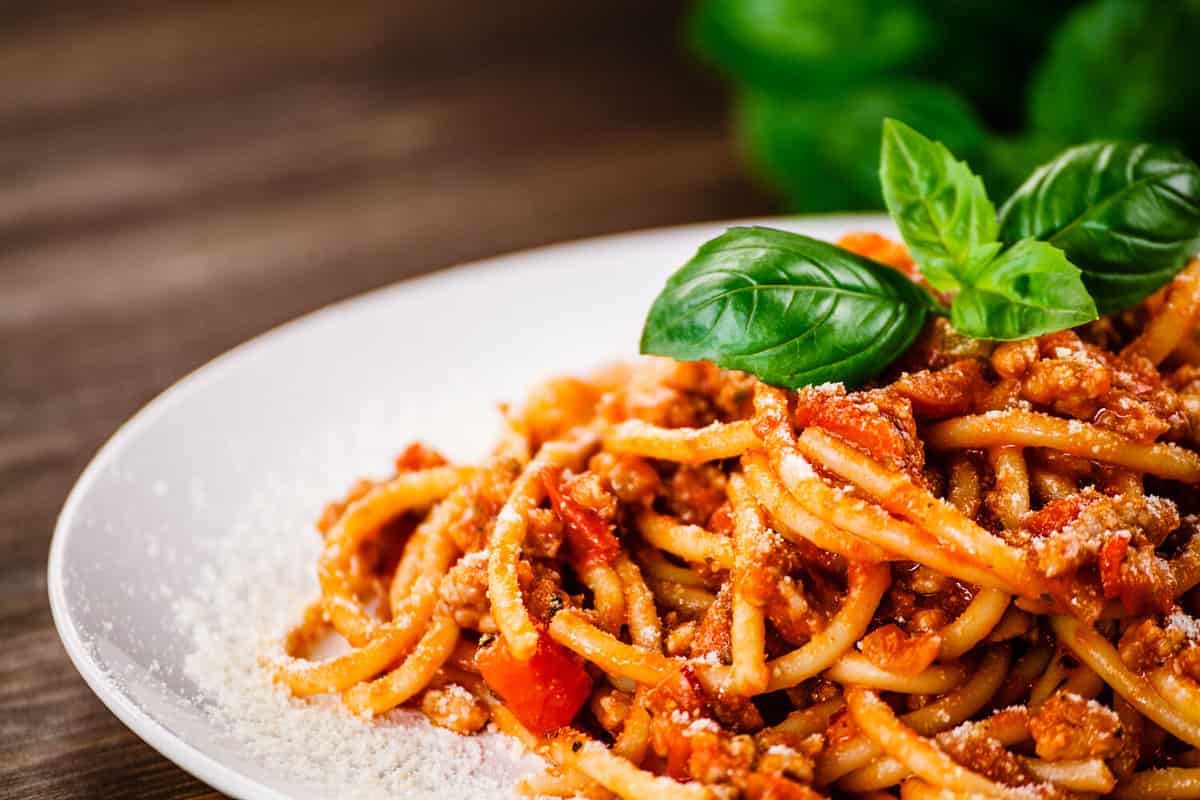
Add some red tomato sauce, fresh basil, and cheese to your pasta with this quick and easy mealtime.
©Jacek Chabraszewski/Shutterstock.com
Popular Pasta Variations
Spaghetti, lasagne, macaroni, and fettuccine, all of these dishes use types of familiar pasta as their base. Pick your pasta shape and decide what sauce to add. If you eat meat, you can make wonderful recipes with added protein or throw in some vegetables. Pasta is delicious with pesto sauce, red sauce, and alfredo sauce (via Delish). Its popularity is linked to its versatility, so use your imagination and try out any number of fantastic pasta dishes for your next meal time.
What Are Rice Noodles?
Rice noodles come from refined rice flour. Partially like the process of creating pasta, rice noodles are combined with water and salt to create a dough, which is then rolled out and cut into strips for the rice noodles. These are dried and packaged. Rice noodles are prominent in Asian cooking styles and can be slightly more temperamental to cook only because they cook very quickly and can get sticky quite fast!
History and Origin
As with pasta, the exact origin of rice noodles is hard to place, but according to PBS, scientists believe the noodle has been around for thousands of years. Many believe it originated in Asia, before trickling into Italian cuisine with a different flour base. The Atlantic cites recipes for noodles that date back to China in the 3rd century A.D. as well as in the 5th century A.D. Jerusalem. Around the 1930s, Thailand went through a political rebrand, with Pad Thai, which is made from rice noodles, marketed as their national dish. The expansion of trade routes and travel meant that rice noodles were available for consumption beyond just Asian countries, and as such the recipe variations have exploded.
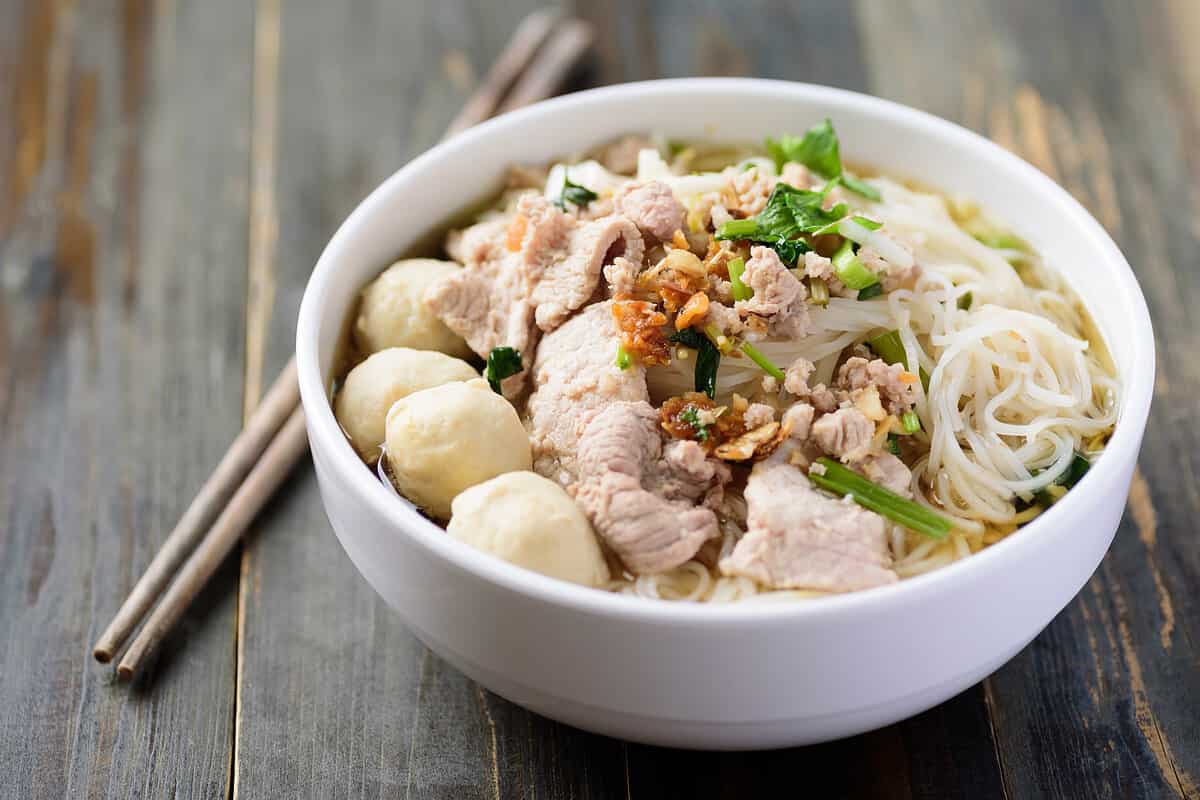
Rice noodles are used in traditional Asian dishes, with protein, sauces, and wonderful veggies.
©iStock.com/Nungning20
How To Make Rice Noodles
Rice noodles can be tricky because they cook very fast and can become a sticky mess when overcooked. A popular way to include rice noodles in many classic dishes is to parboil them. This means that they are cooked partially in water, removed before fully done, and then tossed into a stirfry. This style is popular for dishes like Pad Thai or Drunken Noodles. One recommended method is to put the rice noodles in hot water to separate them slightly. Next, quickly boil them and then remove them before they can disintegrate from too much heat (via The Spruce Eats).
Popular Variations
A common type of rice noodle, and the thinnest one, is called vermicelli. Báhn Pho, a flat rice noodle, is used in Pho soups with broth, protein, bok choy, and other garnishes. Similar to Báhn Pho is Bàhn Canh, which is slightly wider and often quite chewy. There are also unique rice noodles like the rolled Kuay jab, which is tossed with protein and traditional sauces for a salty, savory meal (via Tasting Table). In the States, rice noodles are commonly served in Chinese, Vietnamese, and Thai cuisines.
Nutritional Value of Pasta vs. Rice Noodles: Calories, Fats, and Vitamins
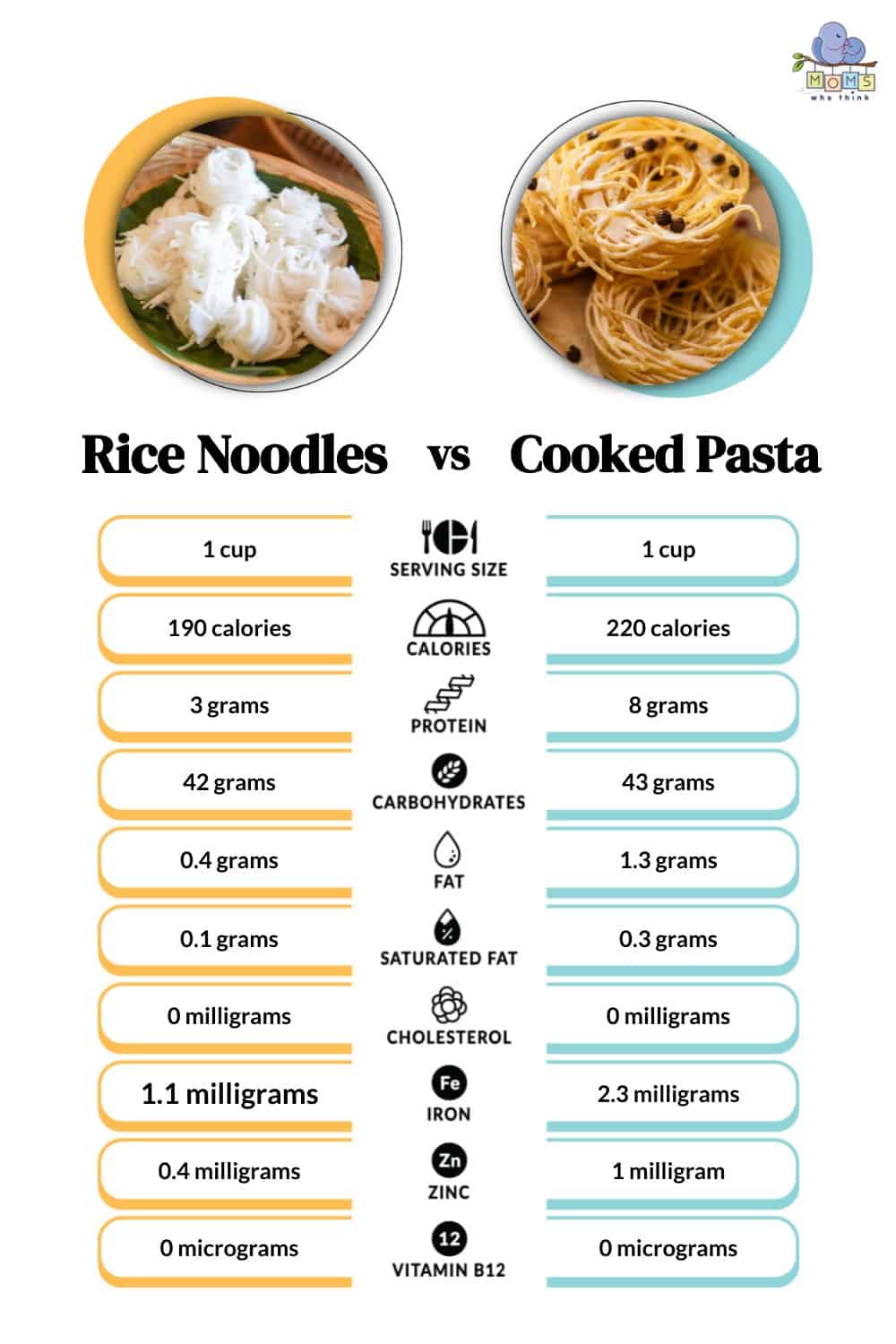
A nutrition comparison of rice noodles and cooked pasta
©
In terms of nutritional value, pasta vs. rice noodles have different things to offer. Pasta packs a punch in protein that is much higher than that of rice noodles, however, it is higher in other ingredients than rice noodles.
1 cup of cooked pasta has 220 calories, 1.3 grams of fat, 8.1 grams of protein, 2.5 grams of fiber, and 43 grams of carbohydrates. Vitamins and minerals include many B vitamins, copper, selenium, phosphorous, magnesium, manganese, and iron (via Healthline). Pasta can be filling and whole-grain pasta has lots of positive health benefits.
On the other hand, 1 cup of cooked rice noodles contains around 190 calories, 3.2 grams of protein, 0.4 grams of fat, and 1.8 grams of fiber. There are 42.2 grams of carbohydrates and 33.4 milligrams of sodium. Rice noodles have vitamins and minerals like thiamine, selenium, and niacin, as well as copper, iron, zinc, phosphorous, and manganese. Rice noodles are gluten-free, low in sodium, and high in vitamin A (via Healthline).
Possible Alternatives to Pasta or Rice Noodles
There are all kinds of pasta types that are made from other kinds of flour. The same goes for rice noodles. Try out chickpeas, lentils, or pasta made from vegetables. And, there are noodle variations made from tapioca flour and seaweed that can be cooked and used in place of rice noodles. Get cooking!
Are Pasta And Rice Noodles The Same Thing?
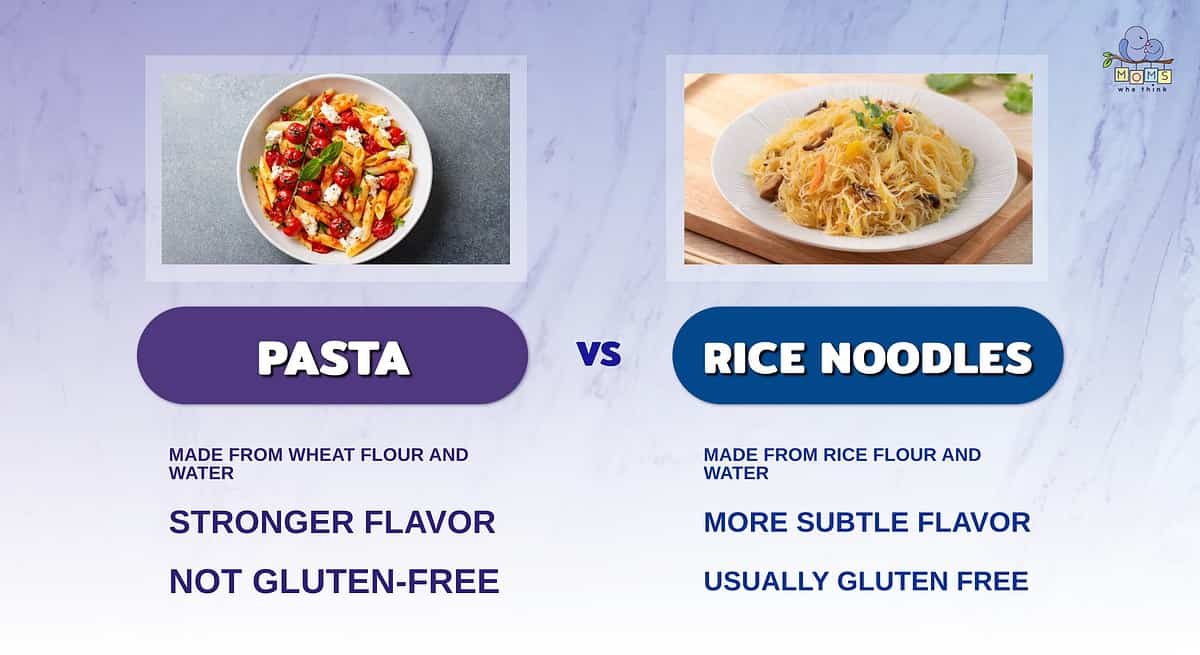
- One of the biggest differences between pasta and rice noodles is that pasta is made with wheat flour, while rice noodles use rice flour.
- Pasta has a stronger, more pronounced taste than rice noodles. Rice noodles are easy to incorporate into a variety of dishes!
- Rice noodles are usually gluten-free, making them a great alternative to regular pasta for those who can't handle gluten.
Pasta and rice noodles are not the same thing. They are made from different flour bases, with different sauces, seasonings, and traditional ingredients. Though there is some crossover in the process of making pasta and rice noodles, the final product is quite different in taste, texture, and appearance.
Looking for a great pasta recipe? Check out this delicious macaroni recipe:
Print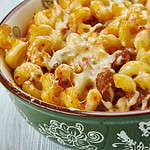
Cheesy Chicken Macaroni
- Yield: Serves 5
Ingredients
1½ cups elbow macaroni
12 ounces skinless, boneless chicken breasts halves, cut into 1-inch pieces
¼ cup finely chopped onion
1 (6.5 ounce) container semisoft cheese with garlic and herb
1 ⅔ cups fat free milk
1 tablespoon all-purpose flour
¾ cup shredded reduced-fat cheddar cheese
2 cups fresh baby spinach
1 cup cherry tomatoes, halved
Instructions
1. Cook macaroni according to package directions, omitting any salt; drain.
2. Meanwhile, coat a large nonstick skillet with cooking spray; heat skillet over medium-high heat. Add chicken and onion; cook for 4 to 6 minutes or until chicken is no longer pink and onion is tender, stirring frequently.
3. Remove skillet from heat and stir in semisoft cheese until melted.
4. In a medium bowl, whisk together milk and flour until smooth. Add to chicken mixture; cook and stir over medium heat until thickened and bubbly.
5. Stir in cheddar cheese until melted.
6. Add cooked macaroni and spinach; cook and stir for 1 to 2 minutes or until heated through and spinach begins to wilt.
7. Stir in tomatoes. Serve immediately.
Nutrition
- Serving Size: Per serving
- Calories: 369
- Sodium: 393mg
- Fat: 12g
- Saturated Fat: 7g
- Carbohydrates: 33g
- Fiber: 4g
- Protein: 33g
- Cholesterol: 85mg
The image featured at the top of this post is ©Anton Chernov/Shutterstock.com
